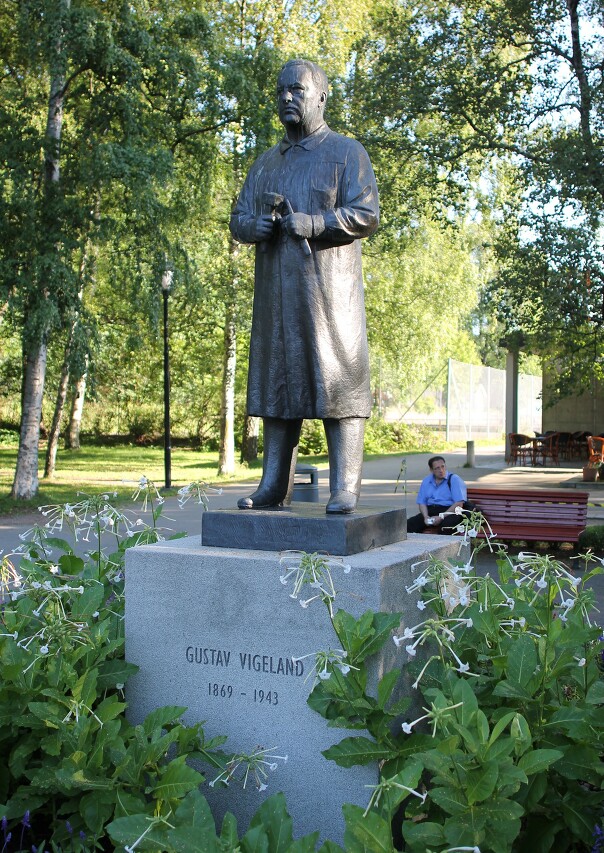Gustav Vigeland Biography and Park History
Just outside the park gates, on the right, there is a monument to the author of the grandiose sculpture complex. The great sculptor was born on April 11, 1869 in the seaside town of Mandal in the very South of Norway, in the family of cabinetmaker Elyse Torsen and was christened Adolf Gustav Torsen. Adolf was the eldest of four brothers, helped his father from an early age, and gained early skills with the instrument. During his school years, Adolf had health problems, and his parents sent him to a more suitable climate, to the village of Vigeland, where his grandfather lived. The grandfather, seeing his grandson's ability to work with wood, gave him training to the local master Tarald Luen, where the future sculptor mastered the profession of woodcarver. Many years later Adolf Thorsen took the name of the village of Vigeland as a surname.

In 1884, his father arranged for Adolf to go to Kristiania (now Oslo), to work in the workshop of wood Carver Christensen flood, but two years later Adolf returned to Mandal, as his father had died and needed to help his mother and younger brothers. In 1888, Adolf again went to Oslo, intending to find work as an artist. His sketches were appreciated by the sculptor Brijnulf Bergslin, began to support the young man, and the next year Thorsen made his debut at the autumn exhibition with the sculpture "Agar and Ismail" under the name Gustav Vigeland. In 1891, Vigeland received a scholarship and went on a study trip to Copenhagen, then in Paris he got acquainted with the works of Rodin, in Florence he studied ancient sculpture and works of the Renaissance, in Berlin he worked for Edvard Munch for three months. During these years, he began to pay attention to the themes of life and death, the relationship between a man and a woman. Returning to Norway in 1894, Vigeland held his first exhibition, which immediately attracted attention and received positive reviews from critics. From 1896 to 1902, Vigeland worked on the restoration of the Nidaros Cathedral in Trondheim. When he returned to Oslo, he received an abandoned workshop from the municipality, where he was able to continue working. In 1905, after Norway gained independence, Vigeland was recognized as the most talented Norwegian sculptor and began to receive high fees for making statues and busts that glorified his famous compatriots, such as Henrik Ibsen and Nils Henrik Abel. In 1906, the Oslo authorities decided to build a fountain in front of the Parliament building. Vigeland produced a model, but the project was never implemented for a number of reasons. Despite this, the idea completely captured the artist and he continued to work. Gradually, the fountain began to acquire the features of a grandiose sculptural composition. In 1921, the municipality launched a project to build a city library, and the old Studio where Vigeland lived and worked was demolished. After a lengthy dispute with the authorities, Vigeland received a new building for the workshop, but on the condition that all his future works would belong to the city. The new Studio was located in the vicinity of Frogner Park, where Vigeland proposed to build a fountain, which he had been working on for almost two decades. After receiving the consent of the authorities, the artist began working on an open exhibition of sculptures, which he gave all the next 20 years of his life, and later received the name Vigeland sculpture park.

The 850-meter-long alley with an area of 30 hectares, along which there are 227 sculpture groups, was completed in 1944. It is noteworthy that during the war, the German occupation authorities did not stop, but supported the project, seeing in the works of the sculptor images of people of the "highest race" - Aryans. The artist died in 1943, a year before the Park opened. His ashes are kept in the building of the park chapel, and a Museum has been opened there, where plaster models of sculptures, engravings, and drawings are presented.